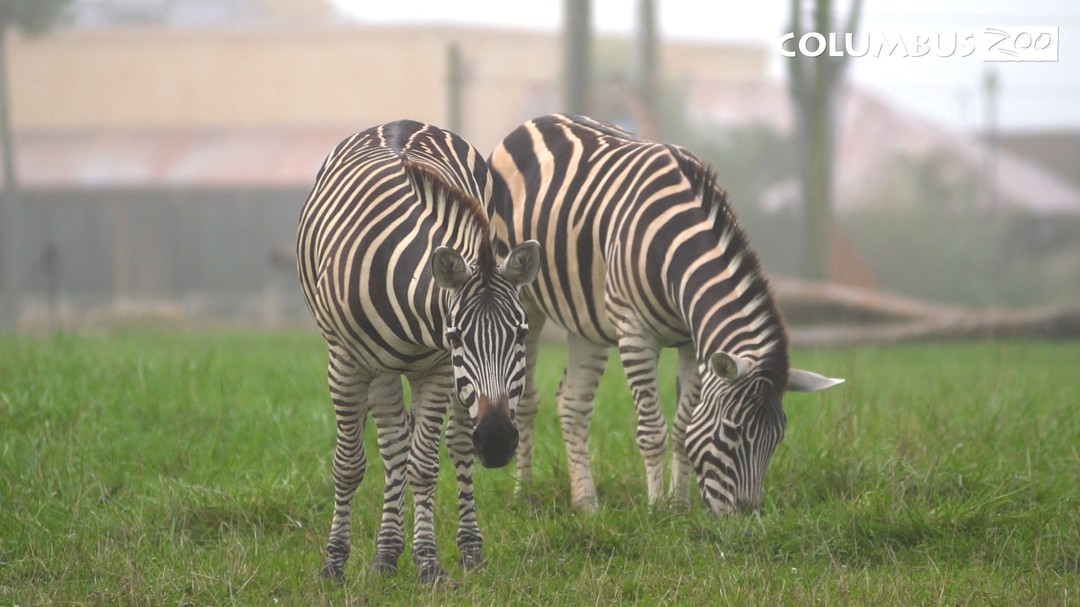- Introduction to the "Heart of Africa" exhibit and its significance in wildlife conservation.
- The ecological and educational importance of preserving African wildlife habitats.
- An overview of the animals featured at the exhibit, including zebras, lions, and wildebeests.
- The role of zoo management in maintaining animal health and visitor engagement.
- The impact of immersive experiences on environmental awareness and conservation efforts.
As the sun begins to warm the landscape, signaling the arrival of summer, an exciting opportunity emerges for wildlife enthusiasts and families alike. The "Heart of Africa" exhibit reopens, offering a glimpse into the vibrant and diverse ecosystem of the African savanna. This 43-acre exhibit invites visitors to experience the rhythmic drumming of Mudiwa Village and the lively buzz of a traditional marketplace. Beyond the cultural elements, the true stars are the zebras, wildebeests, and gazelles wandering across expansive grasslands, and the majestic lions resting in the shade.
The Heart of Africa exhibit plays a crucial role in wildlife conservation and education. By reconstructing the savanna and Mudiwa Village, it creates a habitat that mimics natural environments, providing a sanctuary for endangered species. This approach aids in preserving biodiversity, an essential component of ecosystem health. Furthermore, it serves as an educational tool, helping visitors understand the complex interplay between species and their habitats.
African savannas are home to some of the planet’s most fascinating wildlife. Zebras, with their distinct black-and-white stripes, are often the first to capture a visitor’s attention. These stripes act as natural camouflage, disrupting predators’ perception at a distance. Studies suggest that zebras’ patterns may also deter biting insects, playing a part in their survival strategy.
Lions, the apex predators of the savanna, evoke awe and respect. Known as "king of the beasts," their role in the ecosystem is critical. Lions maintain the balance by preying on herbivores, thus preventing overgrazing and supporting plant diversity. Their presence is a testament to the exhibit’s commitment to showcasing the full spectrum of African wildlife.
Zoo management is central to maintaining the well-being of these animals and ensuring a rich visitor experience. It requires expertise in animal nutrition, habitat design, and veterinary care. The goal is to keep animals healthy and content while providing educational opportunities for the public. Enclosures are crafted to mimic natural habitats as closely as possible, encouraging animals to exhibit behaviors seen in the wild.
Interactive exhibits, like the Heart of Africa, significantly impact environmental awareness and conservation efforts. By immersing visitors in a lifelike setting, these experiences foster a deeper connection with nature. They highlight the importance of protecting habitats from threats like deforestation and climate change. An emotional bond forms when visitors witness animals thriving, driving support for wildlife preservation efforts.
Exhibits like Heart of Africa provide a critical platform for education and advocacy. Through engaging storytelling and interactive elements, they convey the urgency of conservation. Visitors leave with not only memories but also an understanding of their role in protecting these creatures. This awareness can lead to actionable change, from supporting conservation initiatives to making eco-friendly choices at home.
The importance of these exhibits extends beyond their immediate impact. They are repositories of genetic diversity, forming part of global breeding programs. These efforts are vital for the future survival of species under threat. By participating in international networks, zoos contribute to broader conservation goals, ensuring species thrive for generations.
A focus on sustainability is also integral to zoo operations. Initiatives like waste reduction, energy efficiency, and water conservation are woven into daily practices. These efforts reduce the environmental footprint of the facilities, setting an example for visitors. The Heart of Africa exhibit demonstrates how conservation and sustainability can coexist, modeling practices that resonate throughout the community.
Wildlife conservation is a collaborative effort, blending science, education, and public engagement. The Heart of Africa not only delights but also educates a diverse audience. It reminds us of the beauty and fragility of the natural world, inspiring a collective responsibility to protect it. Through continued support and innovation, such exhibits will remain vital to the preservation of our planet’s heritage.
*****
Source Description
It’s the time of year when the weather starts heating up, you can feel the sun on your skin, AND we now welcome you back into the Heart of Africa, which is open for the season! 🦓🦁🦒🐗🐾
The Heart of Africa transports you with the sights and sounds of the Mudiwa Village all around you. Hear the rhythmic drumming pulsing through the plaza and the buzz of a busy marketplace. Plus, experience zebras, wildebeests, and gazelles roaming across the savanna while lions nap in the shade. Spanning across 43 acres, Heart of Africa is an exciting and immersive region you won’t want to miss!


